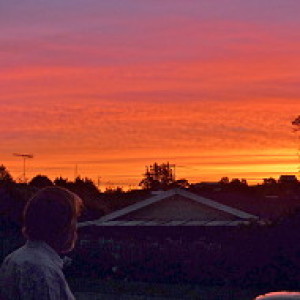Rangitoto
This photo is the first in my new project. To take at least one photo of each of the many volcanoes in the Auckland volcanic field. Some will be hard to show, and others, like Rangitoto, offer many options. I like the way that on a dull overcast day, Rangitoto appears to loom over the North Shore, and the Waitemata Harbour.
Rangitoto is the youngest volcano in the Auckland volcanic field. It erupted more lava than all of the other volcanoes in the field combined. And there are fifty volcanoes. Rangitoto also differs from the other volcanoes in the field in that it is the only eruption to be witnessed by humans. A small Maori fishing village was buried in Rangitoto ash on nearby Motutapu Island. It is the only Auckland volcano to have erupted in the sea, coming up in the entrance to the Waitemata Harbour. Finally, there were two distinct eruptions, separated by 7 - 20 years; all the other volcanoes had a single eruptive episode.
Not quite a perfectly circular cone, Rangitoto still has a very similar appearance no matter where it is seen from. This appearance is due to a gently sloping lava shield which surrounds three central scoria cones. The highest and most recent has partially covered the two lower cones. There are a number of lava caves near the centre of the island; the largest is 100 m long.
Botanically, Rangitoto is unique in New Zealand with trees growing directly out of basaltic lava flows. The largest pohutukawa forest in the world is on Rangitoto. The scoria cones have a nearly continuous forest cover; there are still large bare patches of basaltic lava.
Rangitoto is linked in Maori lore to a battle between illustrious ancestors, and in myth is linked with the creation of the North Shore volcanoes, despite being about 100,000 years younger.
With colonisation by the English, and the growth of the city of Auckland, Rangitoto became a source of basalt for building. In 1890 it was designated a public domain under the control of the Devonport Borough Council. Leases were granted to ratepayers, who could then build a cottage, provided all the materials were taken to the island. Over a period of almost forty years 140 small cottages (“baches”) were built. No new leases were granted after 1937, and they could not be sold or bequeathed. When the leaseholder died, the bach was demolished (during the 1970s and 1980s). The policy of demolishing the baches was stopped in 1990, and from 1997 the Rangitoto Island Historic Conservation Trust has been restoring and promoting the heritage value of the bach communities.

Comments
Sign in or get an account to comment.


